
5 Tips for Dry Camping with Kids
5 Tips for Dry Camping with Kids
Plus, why RVing without hookups as a family is awesome!
By: Brittany & Eric Highland
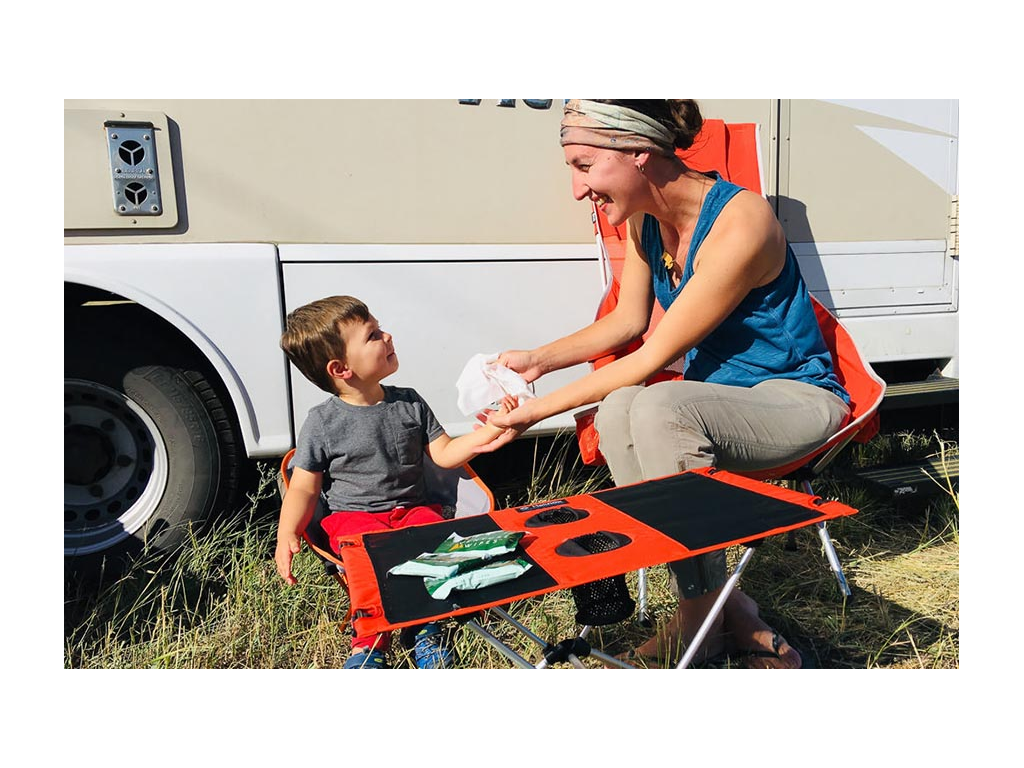
You’ve committed to living in a box on wheels with your children. Why not make things even more interesting and go completely off-grid, with limited electricity, water, and waste tank space?
When you put it that way, it seems crazy for any RVer to go dry camping with kids. But when you stow the cords and escape the sardine-sized concrete pad of your private campground, the world will open up to your family. Dry camping is a means to an end, and it’s a glorious one.
What is Dry Camping?
The definition of dry camping is simple: camping in an RV with zero hookups. No electricity. No water. No sewer connection. Everything is stored or generated by your RV itself.
Now, there are different kinds of dry camping. I love to use the term ‘wild camping’ to describe dry camping way out in nature - maybe in a national forest or on remote BLM (Bureau of Land Management) land. Then there’s ‘moochdocking,’ sometimes called ‘driveway camping.’ This is when you dry camp on a friend or family member’s property. (Though if they provide an electric cord or some other kind of connection, it isn’t dry camping!)
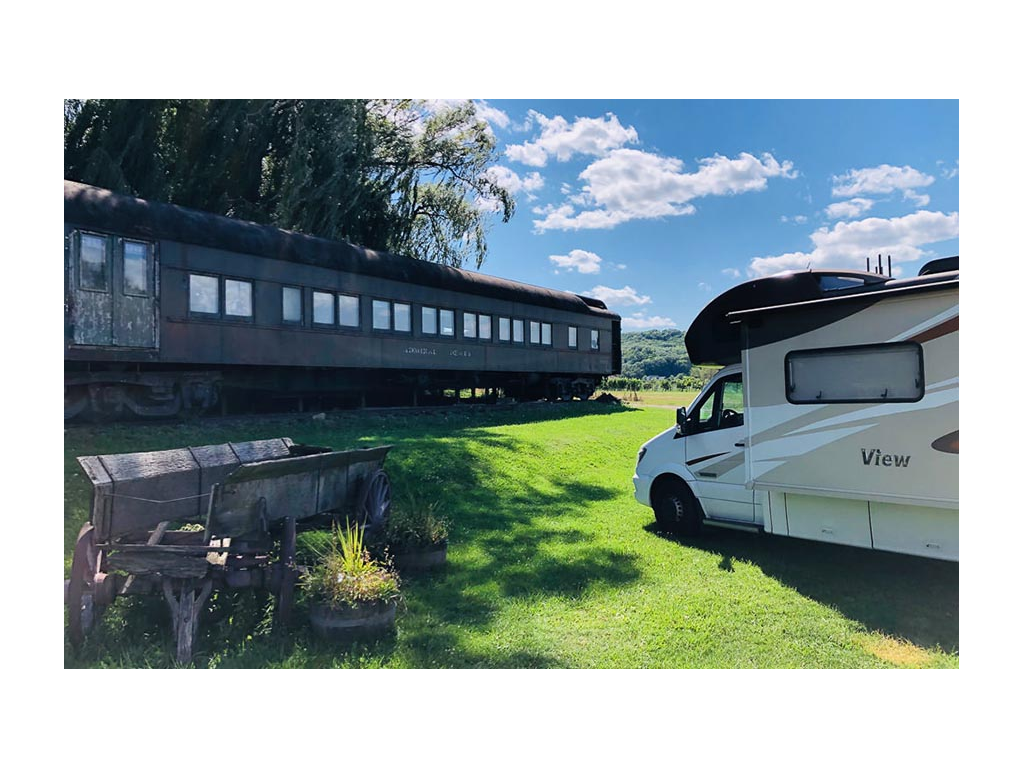
Dry camping at a Harvest Hosts in Ontario, Canada.
Last, but not least, you’ve probably heard the term ‘boondocking.’ For all intents and purposes, boondocking is the same thing as dry camping - it’s RV camping with no connections. At least, that’s my opinion!
Our Humorous History of Dry Camping
My husband Eric and I have been full-time RVing much longer than we’ve been traveling with our toddler, Caspian. Our dry camping history goes back to 2015 and the very first Xscapers event. This convergence at Albuquerque Balloon Fiesta was a week long, and we were terrified when we contemplated a whole week without hookups. At the time, we had only dry camped for one or maybe two nights at a time.
But we were reassured we’d have friends there who could help us through the hiccups. We didn’t want to miss out on the fun, so we went for it.
We didn’t have any solar or a good battery meter, so we probably ran our coach batteries too hard, but overall the experience was a success. Empowered, we attempted solo wild camping in Coconino National Forest outside Sedona, AZ. This was a big fail and we had to leave after one night, since our generator went out and we had no other source of power.
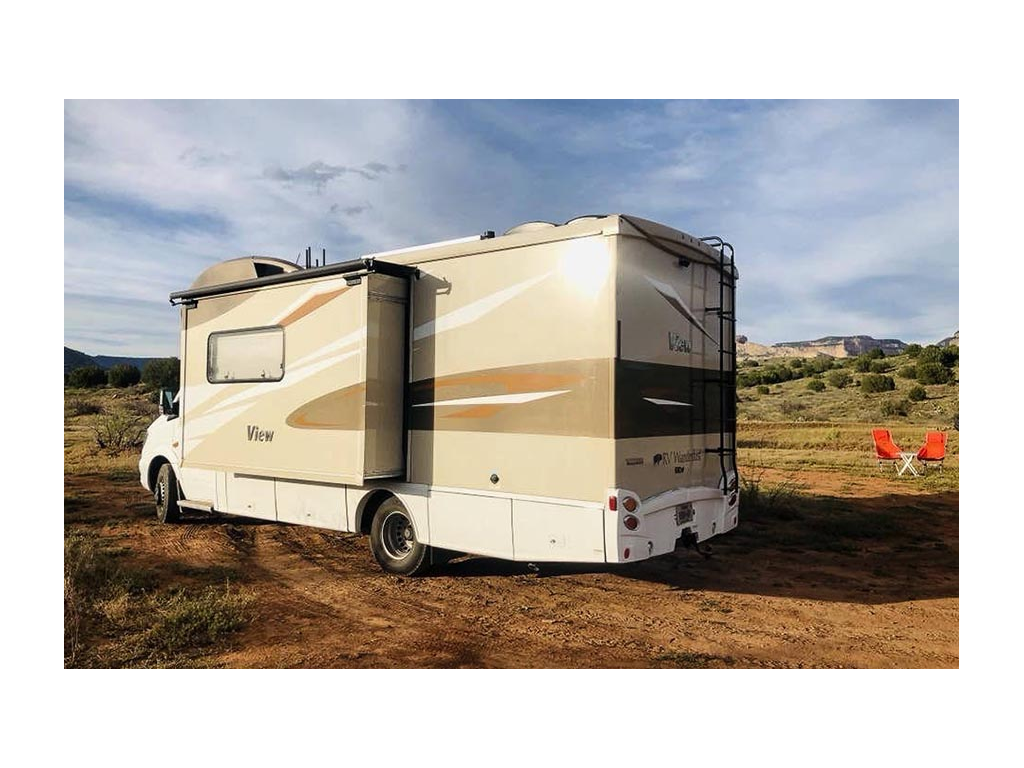
Fast-forward to 2018. We now have a small, 100-watt solar suitcase ... and a one-year-old. We’ve learned some tricks and we know our tank capacity. We manage 22 consecutive days of dry camping in Moab, refilling and dumping only once after 16 days!!! This was a huge turning point for us, and we’ve been pushing our limits ever since.
Seeing our own growth over the past five years, I have no doubt you can learn to dry camp well, no matter how many kids you have or how old they are.
Top Tips for Dry Camping with Kids
Here are the top five tips I can share that will help make dry camping with your kids a positive experience.
1. A Little Solar Goes a Long Way
I don’t think there’s one mechanical bone in our bodies. We are definitely not the people to install our own RV solar system. But, as we got started dry camping, we found that a solar suitcase was a foolproof way to draw power from the sun. We connected the two clips to our battery terminals, and we were good to go.
With our Winnebago View 24J, we purchased a used coach with the solar completely configured. The previous owners, fellow Winnebago Life contributors the Holcombes, had maxed out the solar space on the roof at a whopping 420-watts.
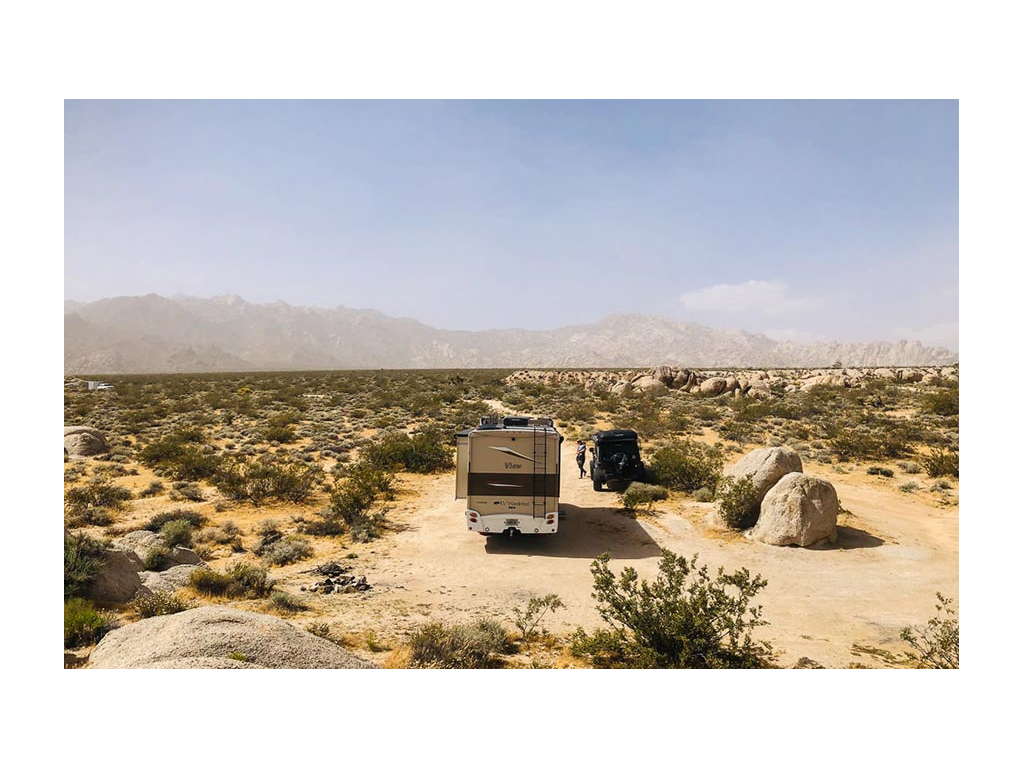
And, of course, there’s never any shame in consulting a solar professional to install solar panels on your RV!
No matter how you add solar to your arsenal, you’ll find that even one small panel goes a long way to keeping your family off-grid for longer.
2. Consider which Devices are Worth Charging
When power usage matters, you’ll find yourself evaluating which devices are worth charging - and why. Before you start dry camping, you should consider how much screen time you want your children to have on a daily basis.
If you choose to decrease screen time while dry camping, then you may want to lead your children through a detox beforehand while practicing replacement activities. Setting precedents is important for everyone. Whether adult or child, we want to know what to expect from a new experience. Have a conversation with your children about the activities that are available to them while dry camping and get them excited about the possibilities!
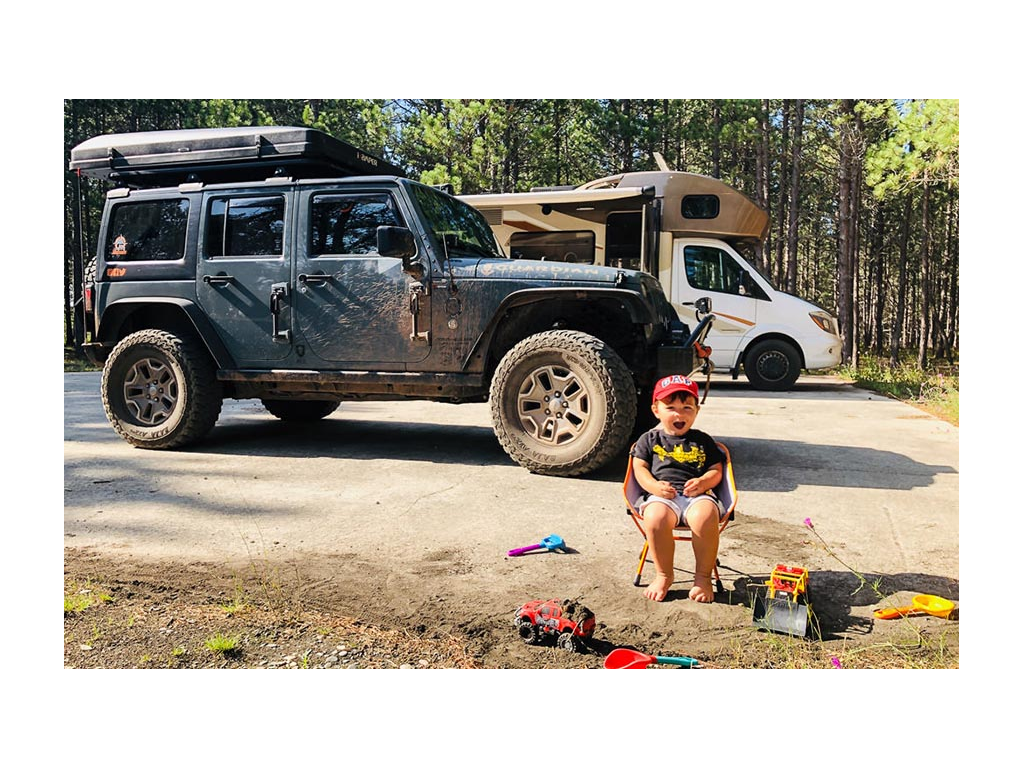
3. Paper Plates are Sanity
So that covers electricity, but what about water needs? Besides laundry and showers, doing dishes tends to be the biggest consumer of water in an RV. Because of that, paper plates and bowls are big sanity-savers. While they won’t completely eliminate the need to do dishes, they’ll cut down on your water use for sure.
And while we’re on the topic of doing dishes, always be aware of where it’s legal for you to dump grey water. Typically, when you’re staying in an area where tent campers may be, like a national forest or state park, you can find a place to dump dishwater outside the RV. This reduces the amount of grey water going into your tank.
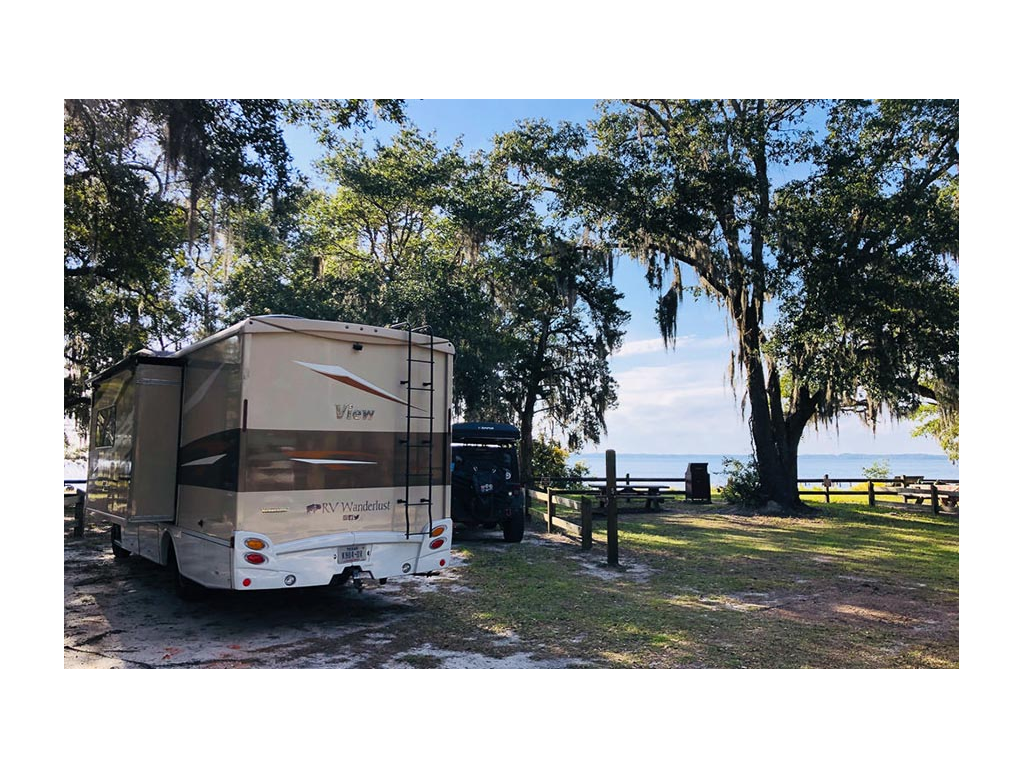
4. Think Outside the Box When it Comes to Hygiene
There’s no way around it. If you’re going to dry camp for extended periods of time, then you and your children will have to take fewer showers.
Fortunately, there are so many ways to enforce good hygiene, even if it’s not up to the strictest standards!
Here are a few suggestions for traditional shower alternatives:
1. Take sailor showers. With Caspian, I turn on the shower to wet him down, then turn off the water while I’m soaping him. Then I turn on the water one more time to rinse off the soap. This uses a small amount of water, but all the dirt washes off before bedtime.
2. If you’re really in a pinch, then wet wipes work wonders. We love Venture Wipes, which are 12”x12”, but there are several brands that make large wipes for those who need them in lieu of taking a shower.
3. Use campground facilities. Of course, you can break up longer stints of dry camping with campground stays where you can take a long, hot shower. You eventually need to dump and fill with water anyway, so this is usually the best solution for everyone.
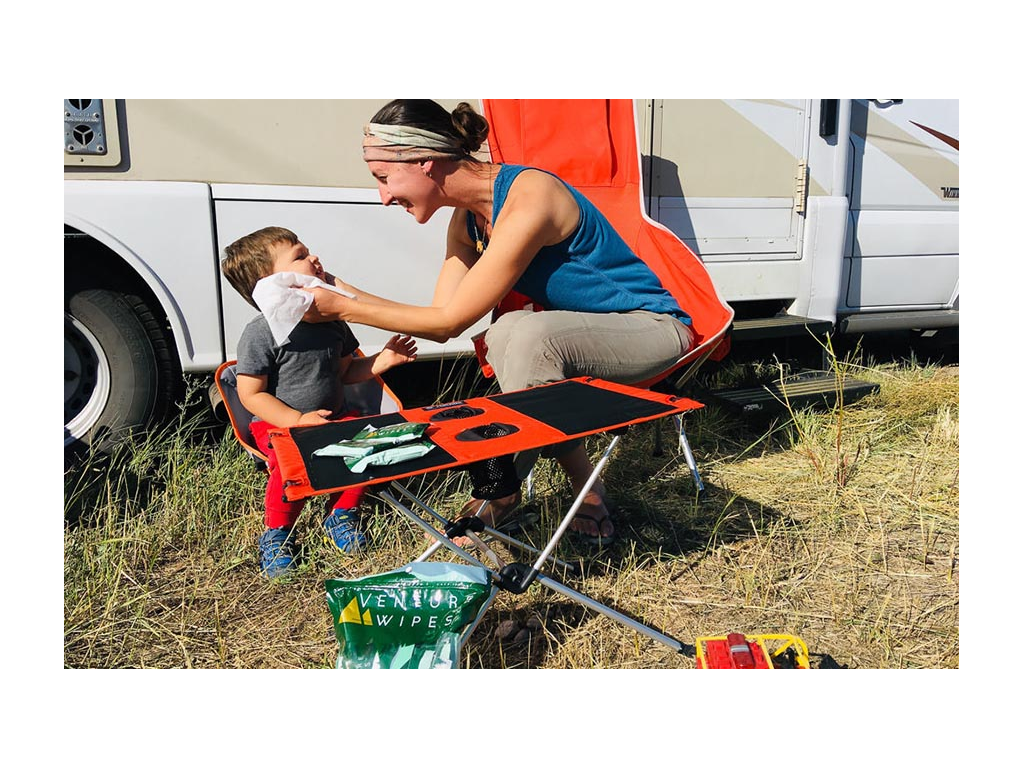
5. Focus on What You’re Gaining, Not What You’re Giving Up
If you’re new to RVing or dry camping, you may be wondering why anyone would put themselves through this hassle - especially if they’re traveling with young children. I can relate because it took us about four years of full-time RVing to abandon full hookups at private campgrounds.
Here’s the thing: if you restrict yourself to full hookups, then you’re closing your life off to the most tremendous travel experiences. When you’re willing to dry camp, then you’ll find yourself on a canyon rim in the Badlands, or on a cliff overlooking the Grand Tetons. And then you’ll ask why you waited so long to take the risk.
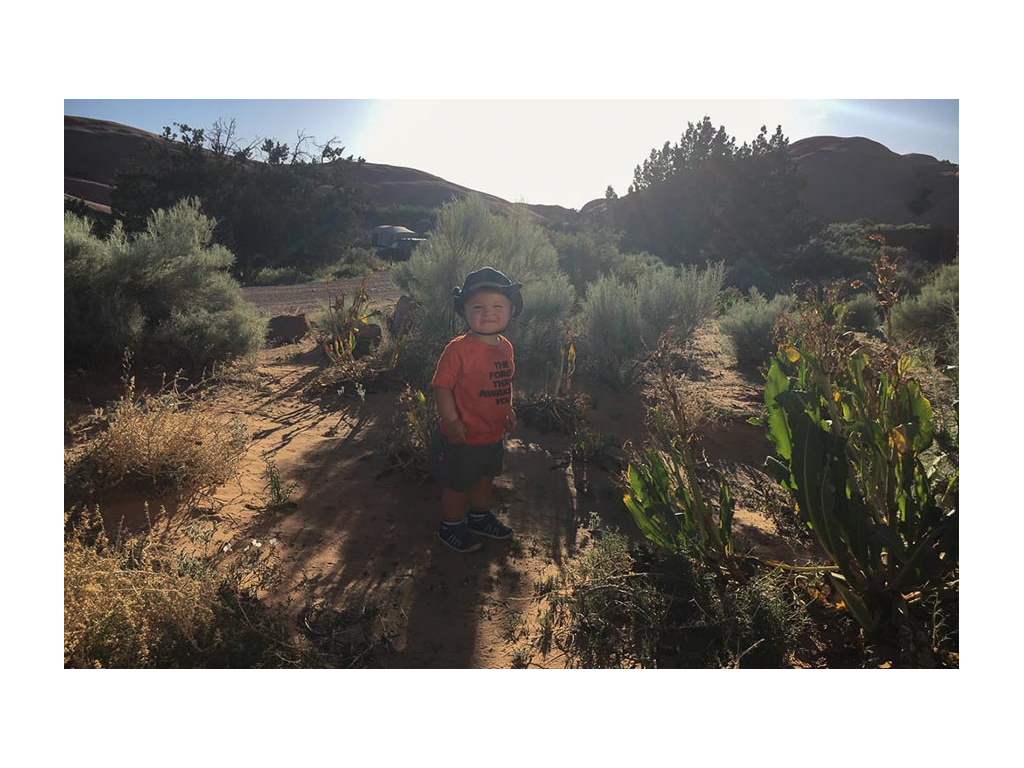
So, Why Dry Camp with Kids?
When your morning involves stepping out the front door with your toddler, onto a new trail through beautiful trees with wildlife all around you, the reason to dry camp with kids is perfectly obvious. It doesn’t matter if you have a little extra dirt under the fingernails. This is the fulfillment we seek when we decide to travel in an RV.
It isn’t always easy. But I hope you push through the challenges to discover the wonder of going off-grid in our amazing country. It’s worth it.
Comments
Comments on this post are moderated, so they will not appear instantly. All relevant questions and helpful notes are welcome! If you have a service inquiry or question related to your RV, please reach out to the customer care team directly using the phone numbers or contact form on this page .